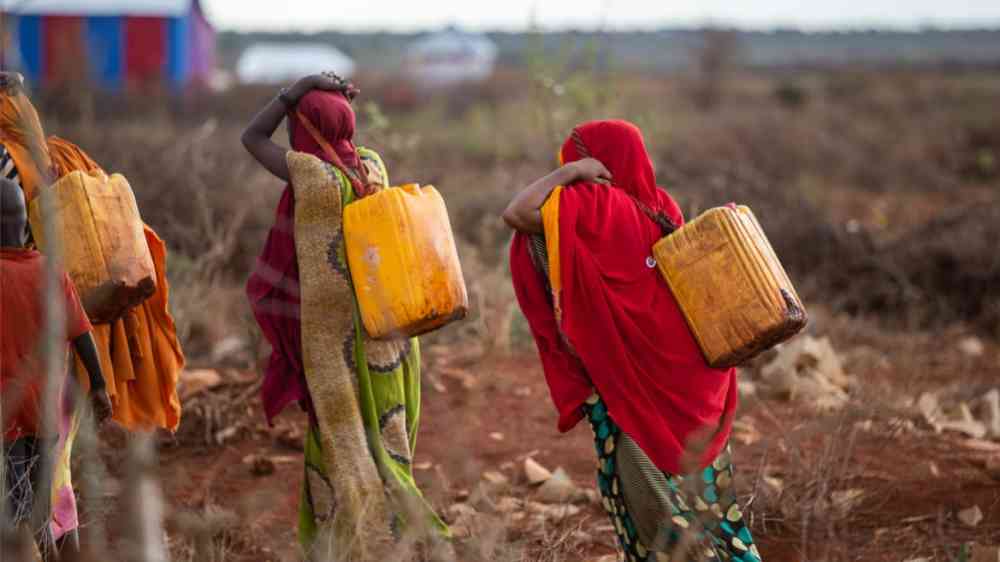We built an algorithm to predict how climate change will affect future conflict in the Horn of Africa: here’s what we found

The Horn of Africa, on the eastern coast of the continent, is currently being battered by an intense and sustained drought thanks to which around 20 million people are going hungry. And, given the ongoing armed conflict in the region – particularly in Somalia and Ethiopia – safely getting nutritious food to these hungry people has become even more challenging.
This isn’t the first time these two situations have coincided in this region, but this time they’re both worsened by high wheat prices – thanks to the war in Ukraine and export embargoes in India affecting access to traditional foods such as porridge.
Whether directly or indirectly, both drought and conflict can be linked to climate change. It’s of course vital to tackle these problems now. But if we don’t simultaneously address the long-term impacts of climate change too, any efforts we make in the present will be in vain.
To try to project future risks from armed conflict in the region into the future, we – researchers from Utrecht University and the Netherlands Environmental Assessment Agency, together with the Peace Research Institute Oslo and Uppsala University – created a new machine learning model to look at how different scenarios of armed conflict over the African continent could play out between now and 2050. Specifically, we wanted to know how armed conflict could be affected by climate change, as well as by future social and economic development.
Our results showed that cutting emissions globally and investing in socioeconomic development locally can reduce the risk of conflict. Doing this would also have the added benefits of helping local food production flourish and lowering dependency on the international trade market. But when we ran this scenario, the Horn of Africa still remained especially prone to conflict.
We needed to understand why this area remains more at risk than others. First, we specifically looked at the effect of climate change on conflict, using indicators such as soil moisture and rainfall.
What our model suggested was that these environmental factors weren’t actually as important as socioeconomic factors – such as education and GDP – because they usually merely light the spark of conflict risk in situations where people are already struggling. That means, to avoid future conflicts being triggered, it’s crucial to focus on investing in education for young people – women in particular – and improving local housing, markets, schools and hospitals.
But we also found that in large parts of eastern Africa, climate change is still going to increase conflict risk. To prepare for that, we need climate adaptation and peace-building programmes that take environmental change into account.
For example, it’s important that local farmers are given better access to banks and insurance, so if their crops fail one year they can start again the next. Farms need to prioritise crops that are more resilient against drought, such as quinoa, millet and sorghum. And financial organisations, governments, businesses and local communities must all be made responsible for lowering emissions and keeping climate change to a minimum.
Challenges
Unfortunately, it’s extremely difficult to understand how climate change will actually affect conflict risk. The future trajectories of global warming and conflict are both surrounded by uncertainty.
Just because conflict was driven by certain factors in the past doesn’t mean that those factors will influence conflict in the same ways in the future, meaning that using history to project upcoming conflict is tricky. And geopolitical shifts, such as the current war in Ukraine, can alter conflict risk by raising food prices, slowing economic growth and causing tension between national governments.
Developing and improving the accuracy of long-term conflict risk projections like ours is vitally important – not just to help prevent conflict now, but also to decide how to adapt to a changing climate in ways that will also reduce the likelihood of conflict. That could include programmes creating stable, inclusive employment opportunities for young people, or running intercommunity projects designed to reduce tensions between farmers and herders over land use.
The UN climate change panel IPCC’s 2021 report has made it utterly clear that the window for action is shrinking. If world leaders don’t band together to cut emissions and prepare for a worsening climate in this “decade of action”, the situation in the Horn of Africa will only get worse.
![]()